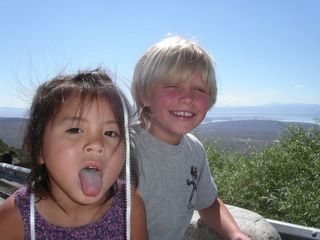The Road Less Traveled



If you’ve been reading these blogs, you’ve probable picked up on the idea that I’ve been very impressed with the Incan architecture, much of which survives to this day. We have, of course, visited many major Incan ruins in the area including Pisac, Ollantaytambo, Machu Pichu, and Tipon. However, numerous other small ruins remain scattered about the countryside. These ruins are not on roads and do not appear on tourist brochures or maps and, consequently, they are almost entirely overlooked by the average tourist who has neither the time nor the inclination to go tramping about the countryside. I, however, think that tramping through the countryside is a far more pleasant way to spend the day than shuffling along with the masses to the next big sight. This is not to say I eschew major attractions, if you go to Paris, you need to see the Mona Lisa and if you go to Peru you need to see Machu Pichu. I have seen them both and I’m happy I have. However, unlike many people, I seem to have some sort of innate attraction to those sites that are off the beaten path. In addition, although I am one, I seem to have something of an allergy to other tourists; when I first arrived in town, I had it largely to myself and I still can’t help feeling a little unjustified resentment to my fellow travelers who have filled up the place in recent weeks. Consequently, we didn’t hike the Inca Trail (it would have been too difficult with the kids and part of it was washed out anyway), we hiked Braunwarth Inca Trails, as my friend Jeff Lehman coined the term after following one of my routes.
One day, after visiting the tourist ruins of Tambomachay and Puca Pucara, I had the brilliant idea of heading out across country to some rumored Incan sites I had heard about from an old Indian who shared the information with me in a vision quest, or something like that. Not wanting to leave civilization on an empty stomach, I fortified myself with some soup and chicha an old lady was selling out of her house along the road. The was prepared in a mud brick kitchen on a mud brick stove under the watchful eyes of little cuys who were scurrying about the kitchen floor happy to not be that day’s main course. Between the cuys in the kitchen and the chickens in the dining room, I don’t think the establishment would have received the “Carol Braunwarth Sanitary Seal of Approval” but the soup was one of the best I ever had and I just chose to ignore the dark flecks in the Chicha. From there, using little more than a hand written map and a rusty sextant, we headed across country to the rumored site of Salumpunka heretofore, I believe, unseen by the eyes of White men. The weather was great, the countryside was beautiful, and we found the site with little trouble. These weren’t exactly ruins but an example of a waca or shrine that had been carved into a large rock outcropping. An Intiwata, or hitching post of the sun, and carved into the top of the rock next to a sort of carved rock balcony. We also found pumas, snakes, and condors carved, in bas relief, into the rock. But the best parts of the site were a couple of caves that had been worked by the Incas. One of the caves featured an altar over which a small fissure opened up to the sky. I’ve been told the altar is bathed in moonlight on the full moon closest to the June Solstice. There is a small channel carved into the altar for the drainage whatever “fluids” one might need to drain off of an altar (I prefer to use my imagination rather than having it spelled out for me). The outer and inner entrances to this cave were carved in the shape of llama heads. The other cave was also extensively worked. We found other smaller rock croppings in the area on which seats and steps had been carved by the Incas and Zak, inspired by a book we were reading as a family which noted how wolves mark territory as their own, laid claim to as many of the Incan sites as he could. From there we walked across country to the site of Qenqo which also featured fine examples of how the Incans carved the living rock in situ. We climbed up stairs and through tunnels, marveled at altars that were once covered in gold, tried out mummy niches for size, peered along the site lines of pillars which were used for astronomical observations, and marveled at enigmatic zig-zag channels through which ritual chicha or blood was poured for purposes of devination.


0 Comments:
Post a Comment
<< Home